
What High Park used to look like in Toronto
Just shy of 400 acres, High Park is among Toronto's largest downtown green spaces. The gently undulating landscape is home to a river, a lake, a zoo, a famous grove of Japanese cherry trees, even a historic homestead complete with the tomb of its former owners.
Those departed former residents were the Howards, and Toronto owes the existence of High Park to them. John G. Howard, an architect and city surveyor, owned a sprawling sheep farm on the property with his wife, Jemima, until 1890. 17 years earlier, in 1873, the Howards cut a shrewd deal with the city that dictated the land become a public park upon the demise of the couple in exchange for a downpayment of $300 and an annual, tax-free pension of $1,200, payable as long as one of the pair remained alive.
By the time John G. died in 1890, the city had paid more than $20,000 to the Howards. Somewhere upwards of half a million dollars in today's money. The terms of the deal also stipulated that the Howards tomb, which is just outside their former home, Colbourne Lodge, be maintained with frequent coats of fresh paint and varnish in perpetuity. The land was also to be called High Park.
Here's a look back at what High Park used to look like.
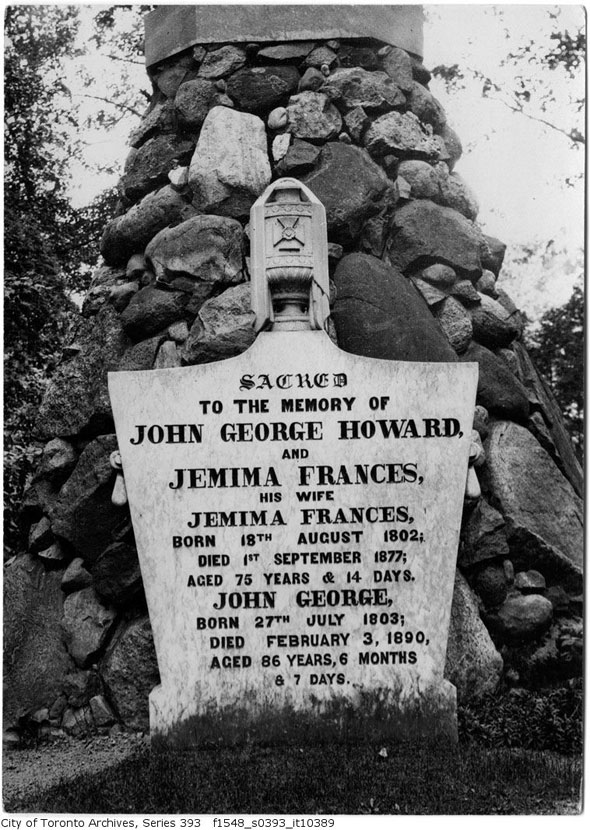
The grave of John George and Jemima Frances Howard near Colborne Lodge. The iron fence surrounding the Howards' resting place was sourced from St. Paul's Cathedral in London, England. Their will also stipulates that the gates to the headstone be kept locked.
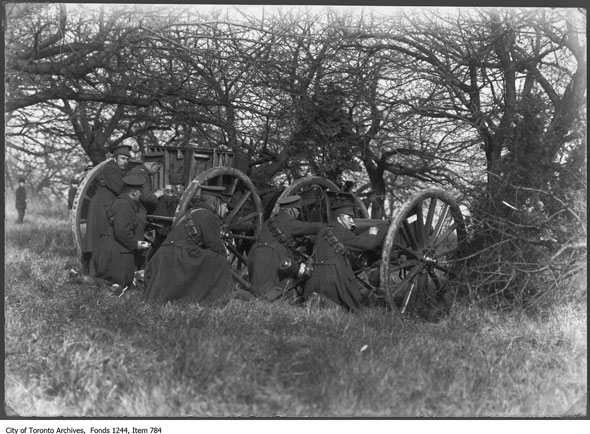
During the first world war, the natural expanse of High Park was used as the backdrop for military training exercises.
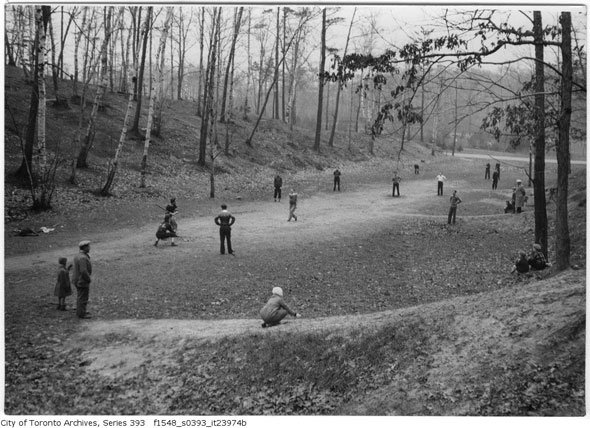
A makeshift baseball game in April 1933. According to the caption, there's a goat somewhere in this picture.
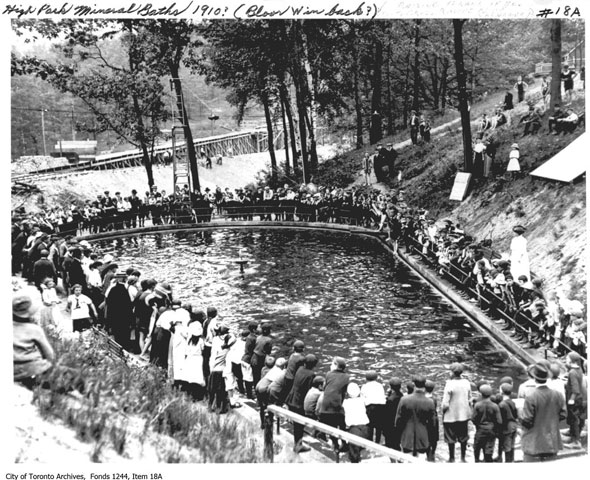
The High Park Mineral Baths, nicknamed "The Minnies," were located north of Bloor in a natural swimming hole. In the background a deep ravine is being filled in for an extension of Boor St.
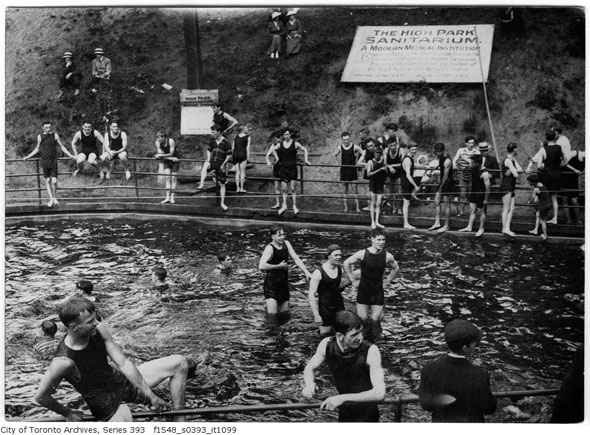
The spring-fed pools were operated as the High Park Sanitarium by Dr. William J. McCormick, who claimed a dip in the water would prevent illness and boost the immune system. The natural pools were cleared during construction of the Bloor-Danforth line.
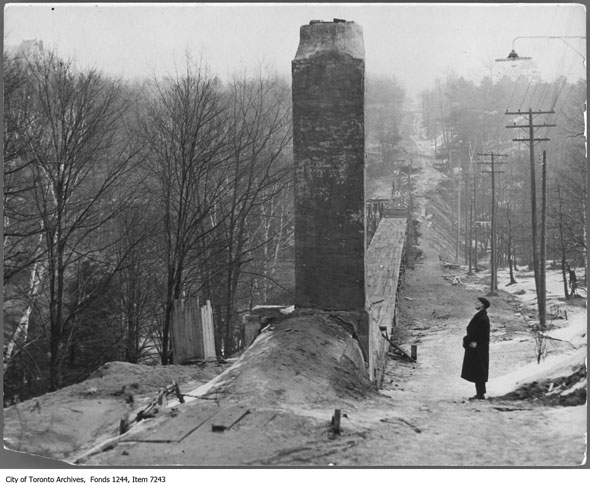
The depth of the manhole cover shows just how much fill was required to push Bloor through the ravine north of High Park.
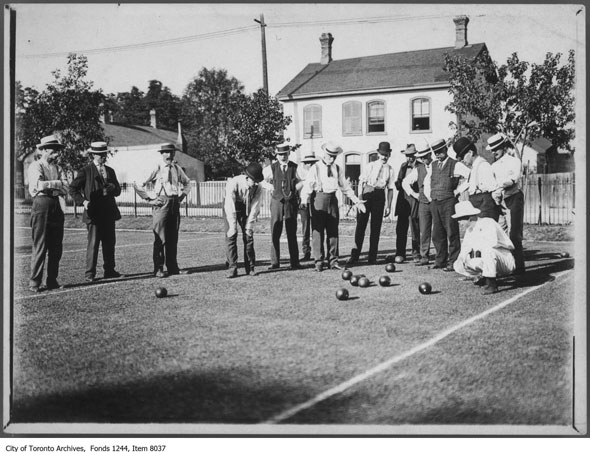
A genteel game of lawn bowls in High Park in 1908.
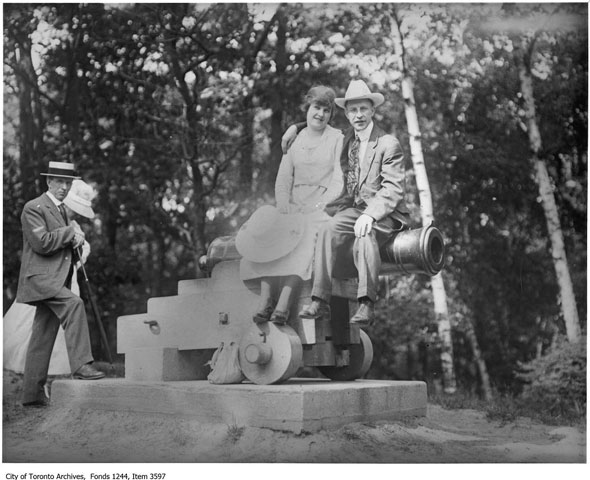
A couple poses on top of a historic brass cannon outside Colborne Lodge. The weapon was made in 1845 and can still be found in the park, despite damage by vandals.
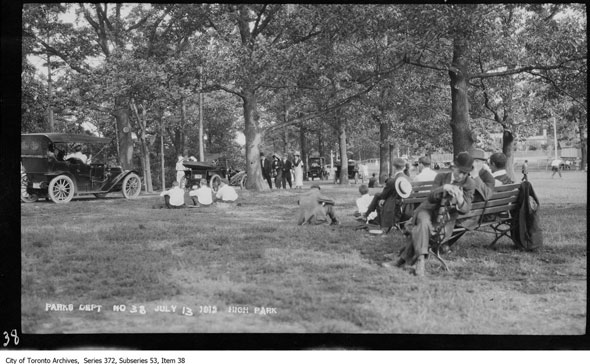
Vehicles in High Park in 1913.
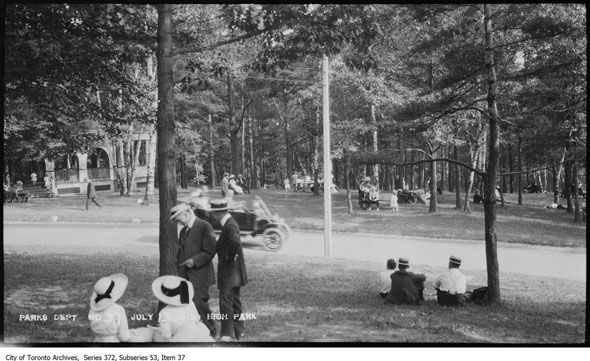
The park's roads were popular with recreational motorists in the early 20th century.
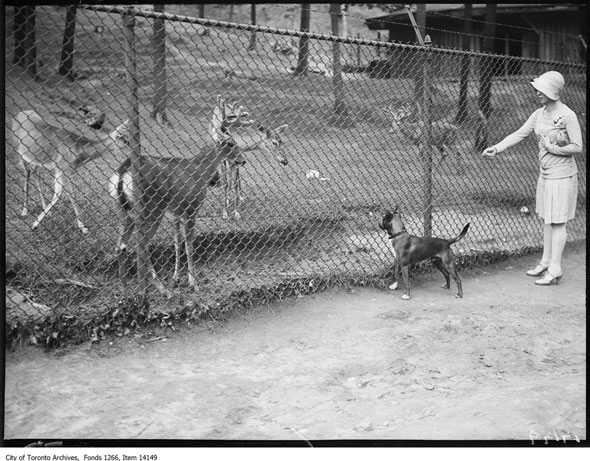
A dog, "Tinker," meets a caged deer in July, 1928.
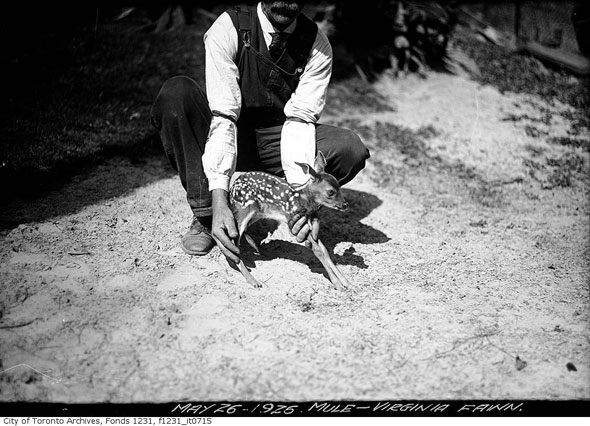
A mule deer fawn at High Park Zoo in 1925.
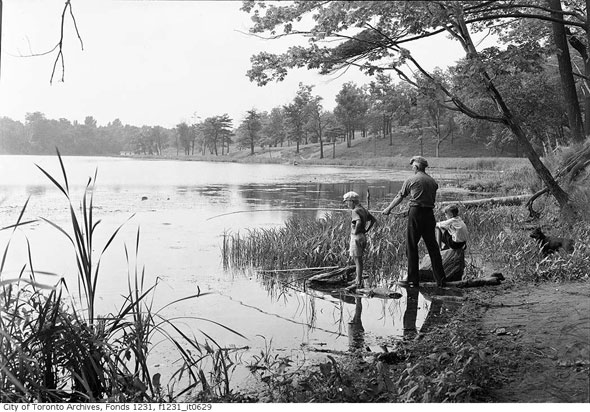
Fishing in Grenadier Pond in July, 1939.
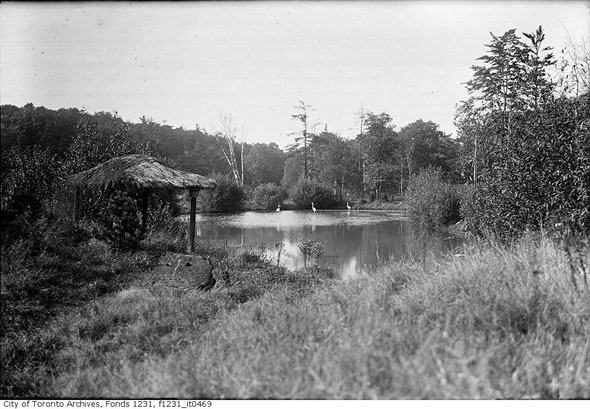
Those birds in the distance are flamingos.
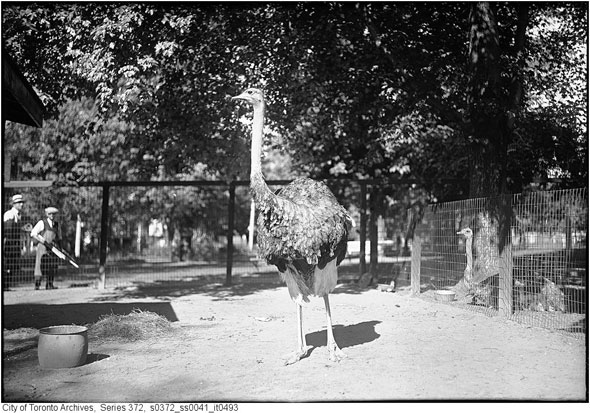
An ostrich in High Park Zoo.
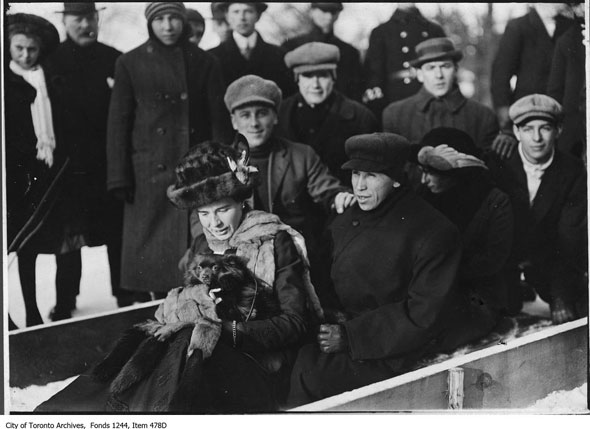
Athlete Tom Longboat in a toboggan in High Park in 1909. In 1907, Longboat came to national attention by winning the prestigious Boston Marathon, smashing the record for the course by almost five minutes. During the first world war he served as a dispatch runner in France.
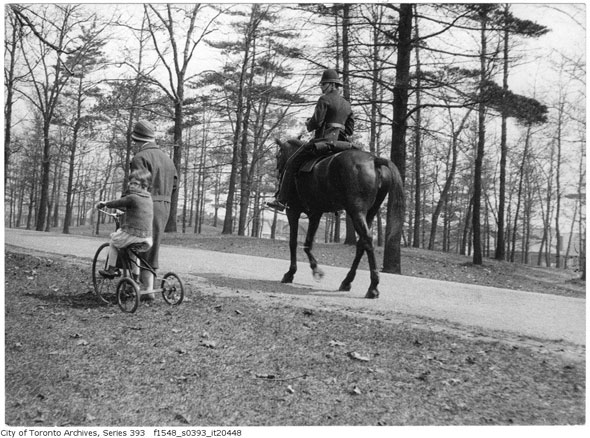
Mounted police officer in May, 1926.
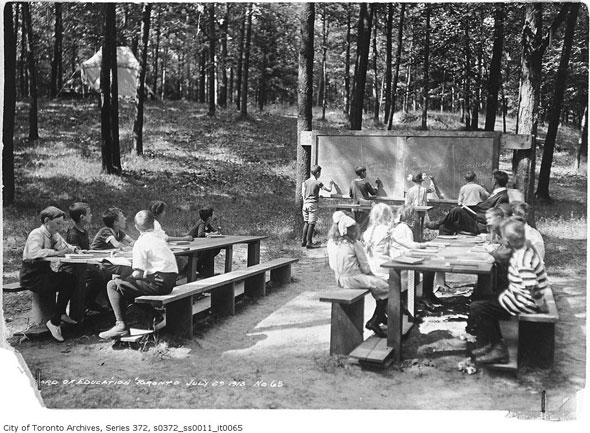
Students at the Forest School in High Park. The mostly outdoor facility served as a summer school for under-nourished children. "Here the repairing of wasted little bodies is a matter of prime concern to the staff," the Globe wrote in 1922.
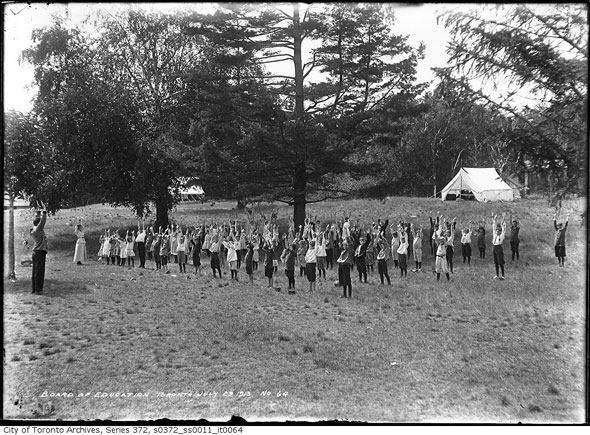
The Forest School had outdoor exercise sessions, classes, even nap times. Rows of cots were arranged under the trees during warm summer afternoons.
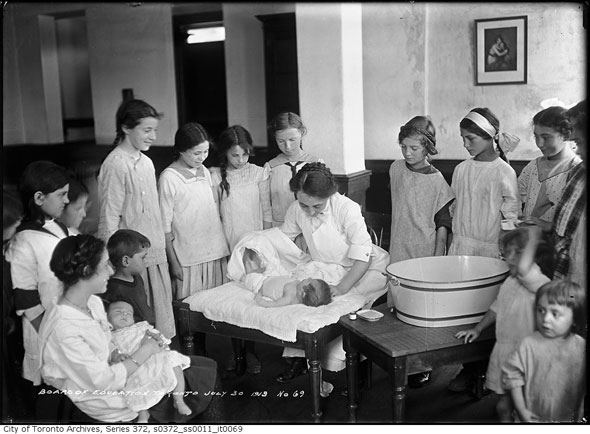
A "little mothers" class at the Forest School in 1913.
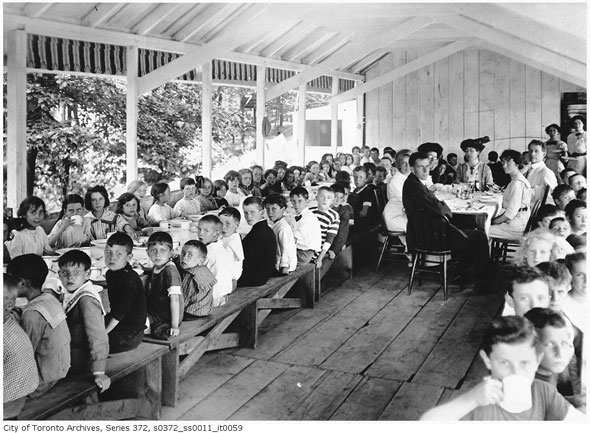
Meals were served in a large open-sided pavilion. The main building of the Forest School is still standing off Colborne Lodge Dr. at the north end of the park.
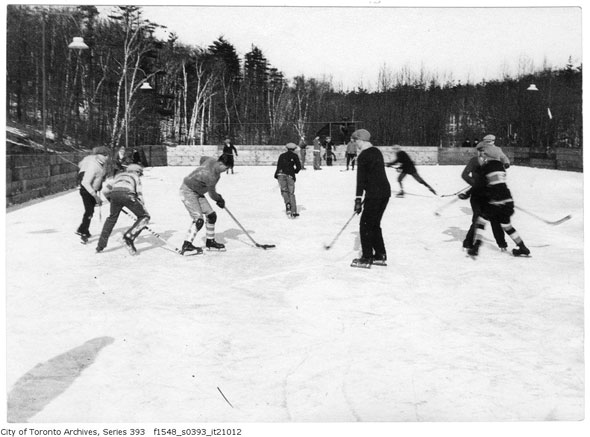
Hockey on a frozen pond in High Park.
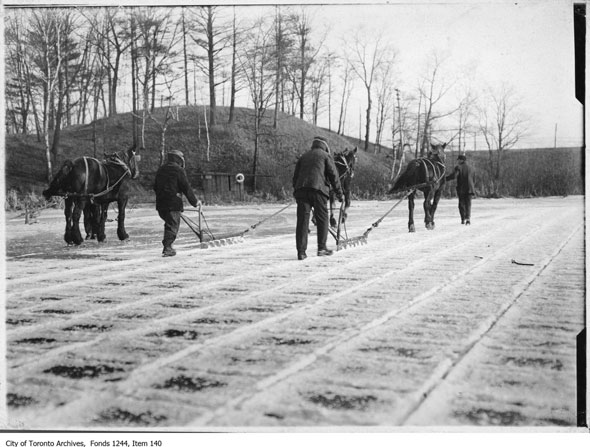
In the days before domestic freezers, ice was cut from the surface of large bodies of water, such as Grenadier Pond. Another popular source of ice was Lake Simcoe.
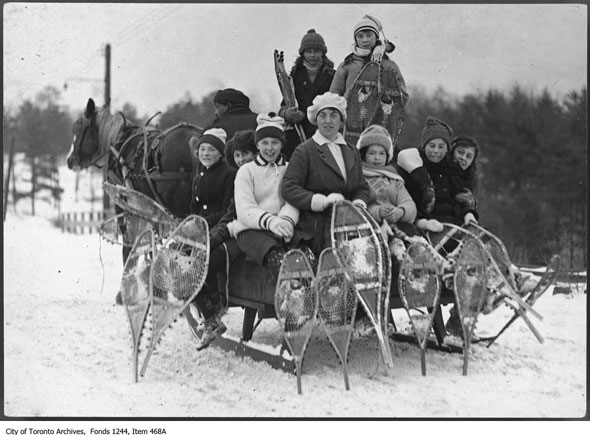
Snowshoers crowd a horse-drawn wagon around 1920.
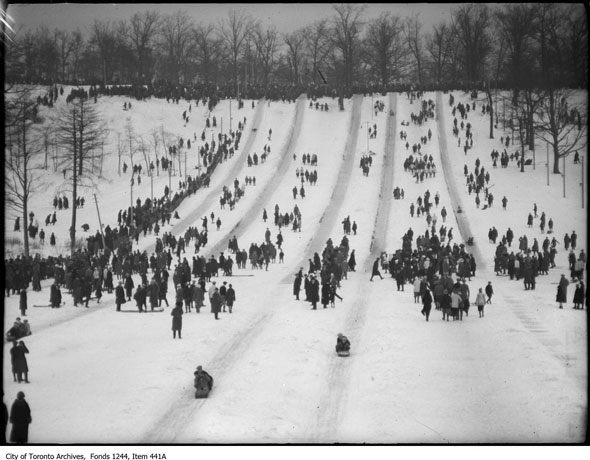
The hills of High Park made for excellent toboggan runs. In summer the same tracks were used for motorcycle hill climbing competitions.
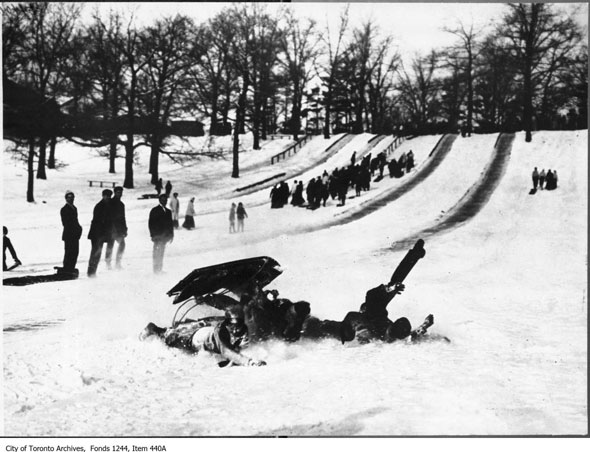
Chris Bateman is a staff writer at blogTO. Follow him on Twitter at @chrisbateman.
Images: City of Toronto Archives
Latest Videos
Latest Videos
Join the conversation Load comments







